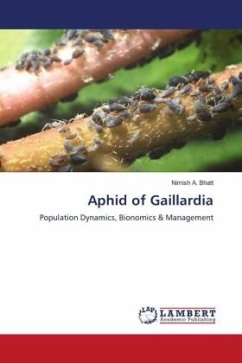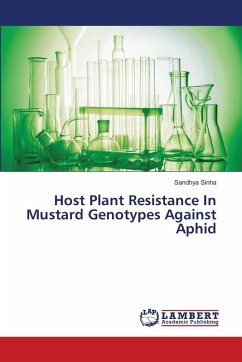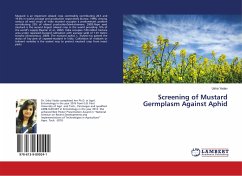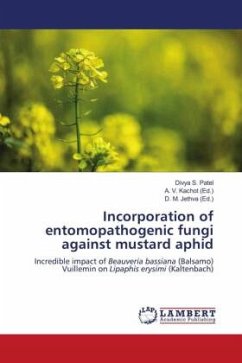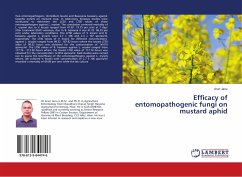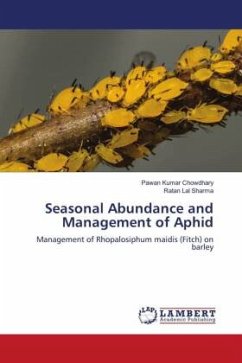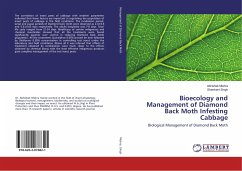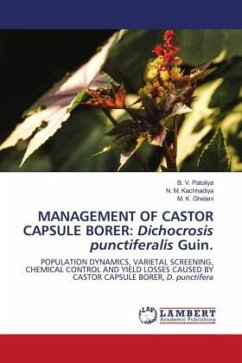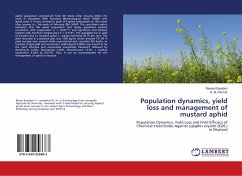
Population dynamics, yield loss and management of mustard aphid
Population Dynamics, Yield Loss and Field Efficacy of Chemical Insecticides Against Lipaphis erysimi (Kalt.) In Mustard
Versandkostenfrei!
Versandfertig in 6-10 Tagen
27,99 €
inkl. MwSt.

PAYBACK Punkte
14 °P sammeln!
Aphid population commenced from 4th Week After Sowing (WAS) [1st week of December (49th Standard Meteorological Week- SMW)] with aphid index 0.14 and reached to peak (4.9 aphid index/plant) at 15th week after sowing i.e., 3rd week of February (8th SMW). The correlation matrix indicated that the aphid population had highly significant positive correlation with evaporation (r = 0.627 ) and significant and positive relation with minimum temperature (r = 0.514 ). The avoidable loss in yield of mustard due to mustard aphid, L. erysimi estimated 60.70 per cent. The yield recorded in protected plot w...
Aphid population commenced from 4th Week After Sowing (WAS) [1st week of December (49th Standard Meteorological Week- SMW)] with aphid index 0.14 and reached to peak (4.9 aphid index/plant) at 15th week after sowing i.e., 3rd week of February (8th SMW). The correlation matrix indicated that the aphid population had highly significant positive correlation with evaporation (r = 0.627 ) and significant and positive relation with minimum temperature (r = 0.514 ). The avoidable loss in yield of mustard due to mustard aphid, L. erysimi estimated 60.70 per cent. The yield recorded in protected plot was 1559 kg/ha which showed 191.94 % yield increase over control while unprotected plot recorded 825 kg/ha. In nutshell, based yield and economics; imidacloprid 0.005% was found to be the most effective and economical insecticidal treatment followed by dimethoate 0.03%, flonicamide 0.02%, thiamithoxam 12.6% + lambda cyhalothrin 9.50% @ 0.015%. Thus, it can be recommended for the management ofaphid in mustard.




